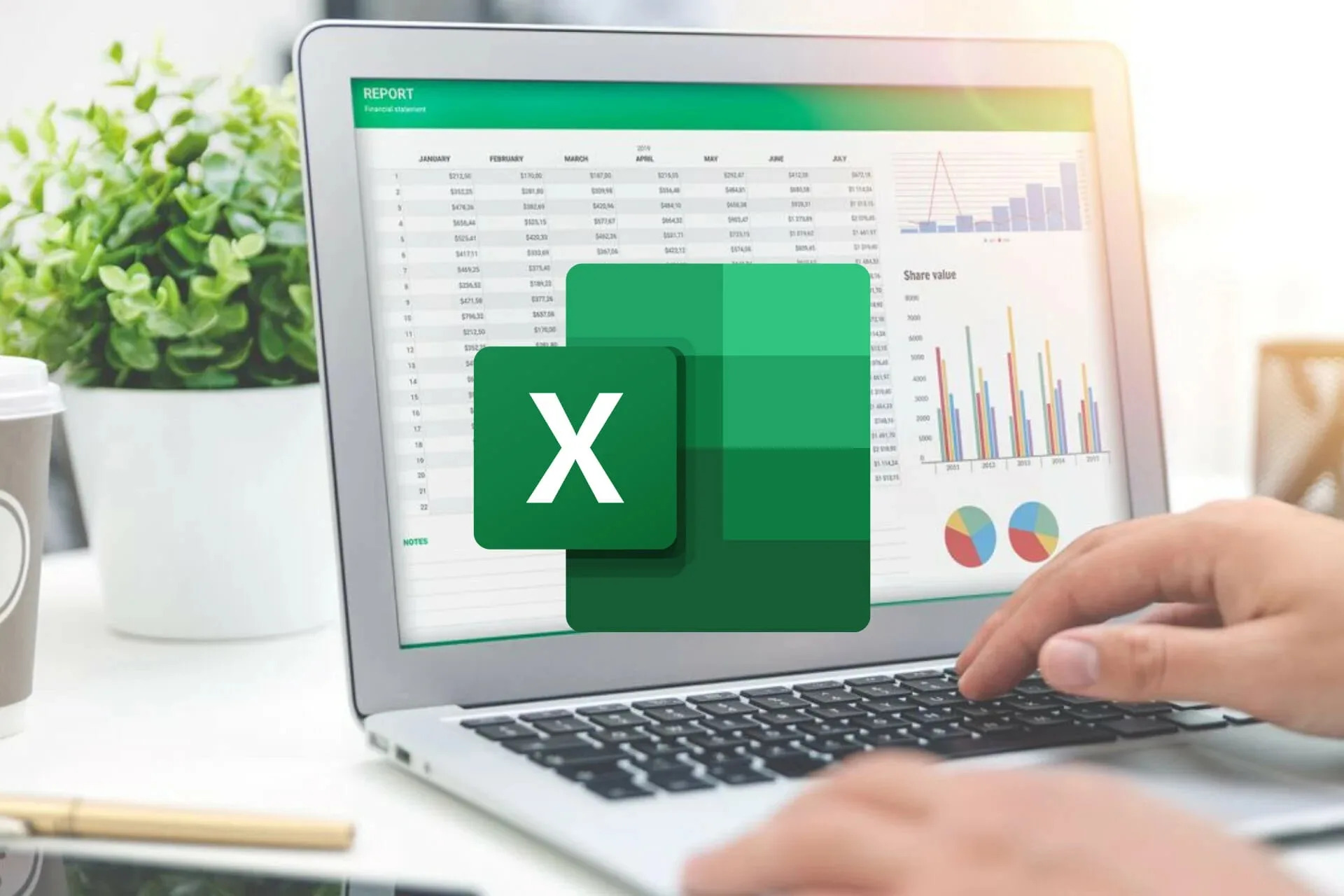Introduction
When it comes to analyzing the stock market or studying historical trends, having access to reliable and accurate data is crucial. Fortunately, Yahoo Finance provides a convenient way to download historical stock data for free. This data can be immensely valuable for conducting research, backtesting trading strategies, and making informed investment decisions.
In this article, we will guide you through the process of downloading historical data from Yahoo Finance. Whether you are a seasoned investor, a data analyst, or simply curious about the historical performance of a particular stock or index, this step-by-step tutorial will help you retrieve the data you need.
Before we dive into the details, it’s important to note that while Yahoo Finance offers a wealth of financial information, it is always wise to corroborate the data with additional sources. It’s also crucial to understand that historical data alone cannot predict future market behavior, but it can provide valuable insights into how assets have performed in the past.
By the end of this guide, you will be able to easily navigate the Yahoo Finance website, search for specific stocks or indices, select the desired date range, choose a download format, and access the downloaded historical data.
Let’s get started and learn how to download historical data from Yahoo Finance, so you can embark on your investment research with confidence.
Step 1: Go to the Yahoo Finance website
The first step in downloading historical data from Yahoo Finance is to visit their website. Open your preferred web browser and go to https://finance.yahoo.com/.
Once the Yahoo Finance website loads, you will find yourself on the homepage, which provides a plethora of market-related information. Here, you can explore news articles, real-time stock quotes, market indices, and more. To continue with the process of downloading historical data, we need to navigate to the specific page dedicated to each stock or index.
To do this, you can either use the search bar located at the top of the website or click on the “Investing” tab in the navigation menu at the top left corner of the page. The “Investing” tab will redirect you to a dedicated page where you can access a wide range of financial tools and information.
For the purpose of this tutorial, let’s assume we want to download historical data for Apple Inc. To find the stock page for Apple, simply enter “AAPL” or “Apple Inc” in the search bar and hit Enter. You will be redirected to the stock page for Apple, where you can find a wealth of information about the company, including stock price charts, financial news, and key statistics. This is where we will access the historical data.
Now that we have arrived at the relevant stock page on Yahoo Finance, we can move on to the next step: searching for the desired stock or index.
Step 2: Search for the desired stock or index
After navigating to the stock page on Yahoo Finance, the next step is to search for the specific stock or index for which you want to download historical data. This step is crucial as it allows you to access the relevant data for your research or analysis.
On the Yahoo Finance stock page, you will find an overview of the selected stock, including its current price, trading volume, key statistics, and recent news articles. If you are looking for an index, such as the S&P 500 or NASDAQ, you can search for it in the same manner.
To search for the desired stock or index, you can use the search bar located at the top of the page. Enter the ticker symbol or the name of the stock/index in the search bar and hit Enter. Yahoo Finance will display a list of matching results based on your search query.
For example, if you are interested in downloading historical data for Microsoft Corporation, you can enter “MSFT” or “Microsoft” in the search bar. The search results will include the relevant stock page for Microsoft.
Alternatively, you can also navigate to the “Summary” tab of the stock page and look for the stock symbol or name located near the top of the page. This information can be useful if you are already on a stock page and need to verify the stock symbol or name. Just make sure you are on the correct stock page before proceeding to the next step.
Once you have found the desired stock or index, you are ready to move on to the next step: selecting the “Historical Data” tab to access the historical data for your chosen asset.
Step 3: Select the “Historical Data” tab
Now that you have found the stock or index page on Yahoo Finance, it’s time to access the historical data. To do this, you need to navigate to the “Historical Data” tab on the stock page.
On the stock page, you will see several tabs, such as “Summary,” “Chart,” “Statistics,” and others. Look for the tab labeled “Historical Data” and click on it to proceed.
The “Historical Data” tab is where you can find a detailed record of the stock’s historical performance over a given time period. This section provides a comprehensive view of the stock’s price movements, trading volumes, and other relevant data points that can be crucial for analyzing trends and patterns.
When you select the “Historical Data” tab, the page will load with various options to customize the parameters of the historical data you want to download. You will also see a price chart that displays the historical stock price movements for the selected time period, giving you a visual representation of the data.
Take a moment to familiarize yourself with the different options and settings available on the “Historical Data” tab. These options include the date range, frequency (daily, weekly, monthly), and the choice to view historical prices or historical prices adjusted for dividends and stock splits.
Now that you have successfully reached the “Historical Data” tab, you are ready to move on to the next step: selecting the desired date range for your historical data download.
Step 4: Choose the desired date range
After navigating to the “Historical Data” tab on the Yahoo Finance stock page, the next step is to specify the desired date range for the historical data you want to download. This allows you to narrow down the timeframe and focus on the specific period you are interested in.
On the “Historical Data” tab, you will find options to customize the date range. By default, the date range may be set to a predefined period, such as the past year or past five years. However, you can modify this range to suit your specific needs.
To choose the desired date range, look for the input fields labeled “From” and “To” or “Start Date” and “End Date.” Click on these fields and select the desired dates using the calendar tool that appears.
You can choose any start and end dates within the available range. Keep in mind that historical data for stocks may go back several decades, while some indices may have a more limited historical dataset. Consider the timeframe that aligns with your research or analysis objectives.
For example, if you are studying a particular stock’s performance during a specific economic event, you may want to select a shorter date range that encompasses that event. Conversely, if you are interested in long-term trend analysis, you might choose a broader time horizon.
Once you have selected your desired start and end dates, take a moment to review your selection to ensure it accurately represents the timeframe you want to study. Double-check the dates to avoid any errors or discrepancies.
Now that you have chosen the desired date range, it’s time to move on to the next step: selecting the “Download” option to proceed with the download process.
Step 5: Select the “Download” option
Once you have chosen the desired date range for the historical data on the Yahoo Finance “Historical Data” tab, the next step is to select the “Download” option. This will initiate the process of downloading the historical data file to your computer.
On the “Historical Data” tab, you will find a button or link labeled “Download” or “Download Data.” Look for this option and click on it to proceed.
By selecting the “Download” option, you are indicating that you want to obtain the historical data file in a format that can be accessed offline. This file will contain the relevant data points for the selected stock or index within the specified date range.
Once you click on the “Download” button, Yahoo Finance will start processing the request and generate the historical data file. Depending on the size of the dataset and the number of records, the download may take a few seconds or longer.
During the download process, you may notice a progress indicator or a message stating that the file is being prepared. You should avoid closing the web page or navigating away from the Yahoo Finance website until the download is complete.
Keep in mind that the download speed may vary depending on your internet connection, so it’s important to be patient while the data file is being generated.
Once the download is finished, you will have the historical data file saved on your computer, ready for access and analysis. The file will typically be in a comma-separated values (CSV) format, which can be opened and analyzed using spreadsheet software such as Microsoft Excel or Google Sheets.
Now that you have successfully selected the “Download” option, you can proceed to the next step: choosing the format and adjusting any additional settings if necessary.
Step 6: Choose the format and adjust settings if necessary
After initiating the download process in the previous step, the next step is to choose the format and adjust any additional settings if necessary. This allows you to customize the downloaded historical data file according to your preferences and requirements.
When the download is complete, you will be presented with options to select the format in which you want to save the historical data file. The most common format available is the comma-separated values (CSV) format, which is widely supported by spreadsheet software and data analysis tools.
To choose the format, look for a dropdown menu or a selection box that allows you to specify the file format. The CSV option is usually preselected by default, but you may also have options to download the data in other formats such as Excel (XLSX) or XML.
If you prefer to analyze the data in a specific software or have compatibility requirements, choose the format that best suits your needs.
In addition to choosing the format, you may also have the option to adjust additional settings. These settings may include selecting the data frequency (daily, weekly, monthly), choosing whether to include dividend and stock split information, or any other relevant options provided by Yahoo Finance.
Take a moment to review the available settings and make any adjustments based on your requirements. These settings can help fine-tune the historical data file to align with the specific analysis or research you intend to conduct.
Once you have made the necessary format and settings selections, you can proceed to confirm the download and finalize the process. Ensure that you have selected the appropriate format and adjusted any necessary settings before moving on to the next step.
Now that you have chosen the format and adjusted any necessary settings, you are ready to confirm the download and move on to the next step: accessing the downloaded historical data.
Step 7: Confirm the download
After selecting the format and adjusting any necessary settings in the previous step, the next step is to confirm the download of the historical data file. This ensures that the file is downloaded and saved correctly to your computer for further analysis and exploration.
Once you have made the format and settings selections, look for a button or link that confirms or finalizes the download. This button may be labeled as “Confirm Download,” “Save,” or something similar.
Clicking on the confirm download button will prompt your web browser to save the historical data file to your chosen download location on your computer. You may see a file download prompt where you can specify the folder location for saving the file.
Choose a destination folder on your computer where you want to save the historical data file. It’s a good practice to select a folder that is easily accessible and organized for future reference.
Once you have selected the destination folder, click on the “Save” or “OK” button to initiate the download process. The file will then be saved to your specified location.
The time it takes to download the file will depend on the size of the historical data and the speed of your internet connection. Larger datasets may take a bit longer to download, so it’s important to be patient during this process.
Once the download is complete, you will receive a notification or confirmation message indicating that the historical data file has been successfully saved to the specified folder. At this point, you can proceed to the final step: accessing the downloaded historical data.
With the download confirmed, you now have the historical data file safely saved on your computer. This file will contain the relevant data points and information for your selected stock or index within the specified date range. You are now ready to proceed with accessing and analyzing the data in your preferred software or tool.
Step 8: Access the downloaded historical data
Now that you have successfully downloaded the historical data file, the final step is to access and open the file on your computer. This will allow you to view and analyze the historical data using software such as Microsoft Excel, Google Sheets, or any other tool that supports the file format.
Locate the folder where you saved the downloaded historical data file. You may have specified a specific folder during the download process or saved it to the default download location on your computer.
Once you have found the file, double-click on it to open it with the appropriate software. The file should open in a spreadsheet application and display the historical data in a table format.
Take a moment to review the data in the spreadsheet. The columns will typically include information such as the date, open price, high price, low price, closing price, trading volume, and possibly other relevant data points depending on the data you chose to download.
You can now perform various analyses on the historical data, such as calculating returns, identifying trends, conducting statistical analysis, or generating charts and graphs to visualize the data.
In addition to analyzing the data, you can also export the data to other formats, merge it with other datasets, or further manipulate it as needed for your research or analysis purposes.
It’s important to keep the downloaded historical data file in a safe and organized location for future reference. This allows you to revisit the data later or update it with new downloads as you continue to gather and analyze historical data for different stocks or indices.
Congratulations! You have successfully accessed the downloaded historical data and can now utilize it for your investment research, analysis, or other purposes.
Conclusion
In this article, we have walked through the step-by-step process of downloading historical data from Yahoo Finance. By following these steps, you can easily retrieve the historical data for stocks or indices of your interest, enabling you to delve into detailed analysis, backtesting strategies, and making informed investment decisions.
We began by introducing the importance of having access to reliable historical data for stock market analysis. Then, we guided you through each step, starting from visiting the Yahoo Finance website, searching for the desired stock or index, selecting the “Historical Data” tab, choosing the desired date range, and selecting the download option. We also covered how to choose the format and adjust settings if necessary, as well as the final step of accessing the downloaded historical data file on your computer.
Remember, historical data can provide valuable insights into past market behavior, trends, and performance. However, it is essential to recognize that historical data alone cannot predict future market movements. It should be used as a tool in conjunction with other analysis techniques and information sources.
As you continue your investment journey or conduct further research, consider exploring and analyzing historical data from different time periods, stocks, and indices. This will enhance your understanding of market dynamics and contribute to making well-informed decisions.
Now that you are equipped with the knowledge of how to download historical data from Yahoo Finance, take advantage of this valuable resource and continue to expand your investment insights and analysis capabilities.

























